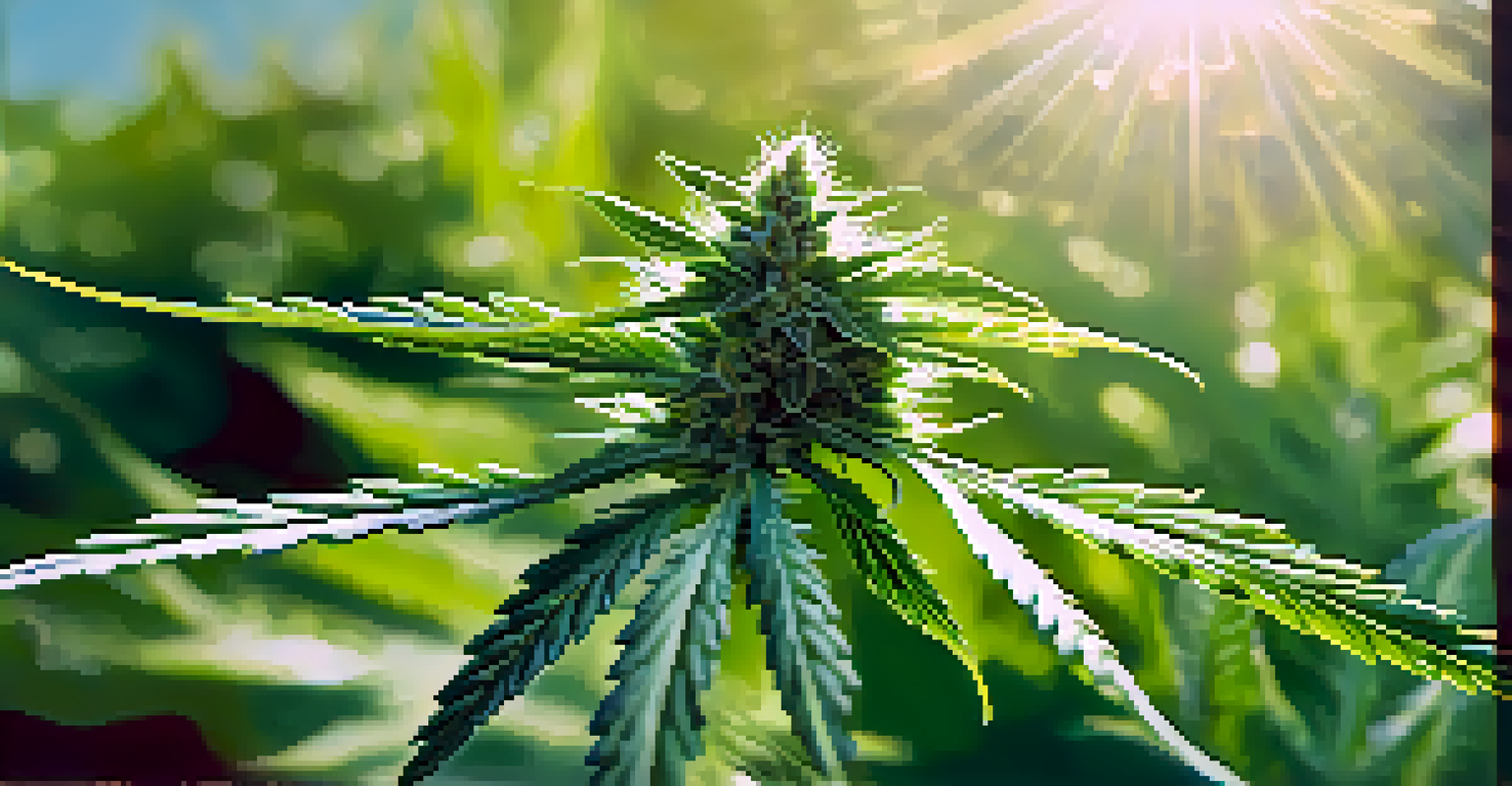Marijuana Use in Patients Taking Opioid Painkillers

Understanding Opioid Painkillers and Their Use
Opioid painkillers are commonly prescribed medications for managing severe pain. They work by binding to opioid receptors in the brain, reducing the perception of pain. However, due to their potency, they also carry a risk of dependency and side effects, which can complicate treatment plans.
The greatest medicine of all is to teach people how not to need it.
Patients often find themselves in a difficult position—balancing effective pain relief with the potential for addiction. Many individuals who struggle with chronic pain may also seek alternative therapies to complement their treatment. This has led to an increased interest in the use of marijuana as a potential adjunct therapy.
Understanding the basics of opioid use is essential, especially when exploring other options like marijuana. As we delve deeper, we’ll look at the potential benefits and concerns regarding this combination.
The Rise of Marijuana as a Pain Management Tool
In recent years, marijuana has gained traction as a legitimate option for pain management. Many patients report using it to alleviate chronic pain, reduce anxiety, and improve sleep. With the growing acceptance of medical marijuana, more healthcare providers are considering its role in pain management alongside traditional medications.

Studies suggest that marijuana may help reduce opioid consumption, which is particularly significant given the current opioid crisis. For some patients, using marijuana can lead to a decrease in opioid dosages, potentially lowering the risk of addiction. This shift towards considering cannabis as a viable option reflects changing attitudes toward its medicinal properties.
Opioids and Dependency Risks
Opioid painkillers effectively manage severe pain but carry a significant risk of dependency and side effects.
However, it's crucial to approach this topic with caution. While marijuana may offer benefits, its use must be guided by medical professionals to ensure safety and effectiveness.
How Marijuana Affects Pain and Opioid Use
Marijuana interacts with the body's endocannabinoid system, which plays a key role in regulating pain and inflammation. This interaction has led researchers to explore how it can enhance pain relief when used in conjunction with opioids. Many users report that marijuana can help mitigate some of the side effects of opioids, such as nausea or mood swings.
Pain is inevitable. Suffering is optional.
The synergistic effect of combining marijuana with opioids could provide a more balanced approach to pain management. For instance, patients may find they can maintain adequate pain control while reducing their opioid intake. This not only helps manage pain more effectively but may also lower the risk of developing an opioid dependency.
Yet, it's essential to remember that not everyone responds the same way to marijuana. Factors such as dosage, strain, and individual health conditions can all play a role in its effectiveness.
Potential Benefits of Combining Marijuana and Opioids
One of the primary benefits of combining marijuana with opioids is the potential for reduced opioid dosage. This is particularly important in combating the opioid epidemic, offering a way to manage pain while minimizing risks. Patients who use both substances may experience better overall pain control and fewer side effects.
Additionally, marijuana can provide relief for conditions that opioids may not fully address, such as anxiety and insomnia. This holistic approach to treatment can enhance the quality of life for patients struggling with chronic pain. By addressing multiple symptoms, the combination can lead to a more comprehensive pain management strategy.
Marijuana as Pain Relief Option
Marijuana is emerging as a viable adjunct therapy for pain management, potentially reducing opioid dosages and associated risks.
However, careful monitoring is crucial. The benefits should be weighed against the risks, ensuring that this approach is tailored to the individual patient.
Risks and Considerations of Marijuana Use
While there are potential benefits, using marijuana alongside opioids is not without risks. One major concern is the possibility of increased sedation, which can impair coordination and judgment. This is particularly important for patients who may already be experiencing side effects from opioid medications.
Moreover, marijuana can have its own side effects, including anxiety, paranoia, or changes in mood. For some patients, these effects can be counterproductive, potentially complicating their treatment. It's vital for patients to communicate openly with their healthcare providers about their experiences to ensure safe use.
In summary, while marijuana may offer advantages for some, it requires careful consideration and professional guidance.
Legal and Regulatory Landscape for Marijuana Use
The legal status of marijuana varies widely across different regions, contributing to confusion among patients and healthcare providers. In some areas, medical marijuana is fully legal, while in others, it remains restricted. This patchwork of regulations can affect patient access and the guidance that healthcare providers can offer.
Patients should be aware of their local laws regarding marijuana use, particularly when it comes to using it alongside prescription medications. Understanding the legal framework can help patients make informed decisions about their treatment options. It also highlights the importance of having open conversations with healthcare professionals about the available choices.
Need for Professional Guidance
Involving healthcare professionals is essential for safely combining marijuana with opioids to ensure effective pain management.
As regulations continue to evolve, the landscape for medical marijuana use is likely to change, offering new possibilities for patients seeking alternative pain management solutions.
The Importance of Professional Guidance in Treatment
When considering the use of marijuana alongside opioid painkillers, it's crucial to involve healthcare professionals in the discussion. These experts can provide tailored advice based on individual health needs, ensuring that the combination is safe and effective. Open communication with providers helps to foster a collaborative approach to pain management.
Healthcare providers can also monitor for potential side effects or interactions, adjusting treatment plans as necessary. This oversight is essential to achieving the best outcomes for patients. Moreover, they can guide patients in selecting the appropriate strains and dosages of marijuana to maximize therapeutic benefits.

Ultimately, a well-coordinated treatment plan that includes professional guidance can help patients navigate the complexities of managing chronic pain while minimizing risks.